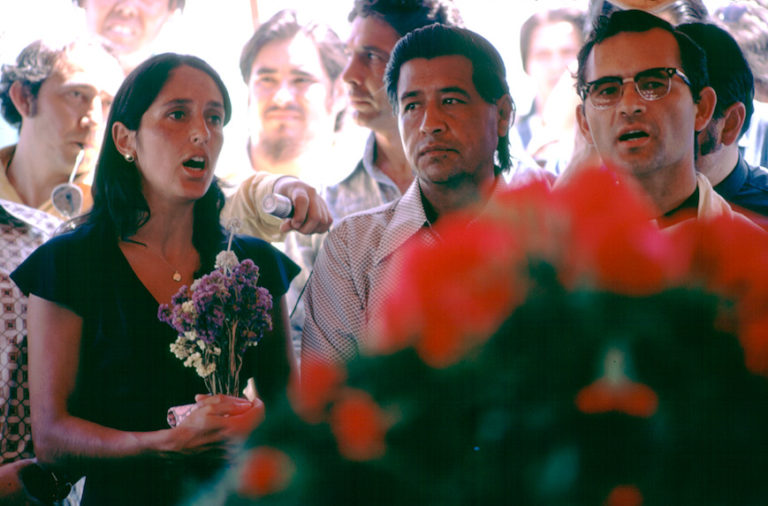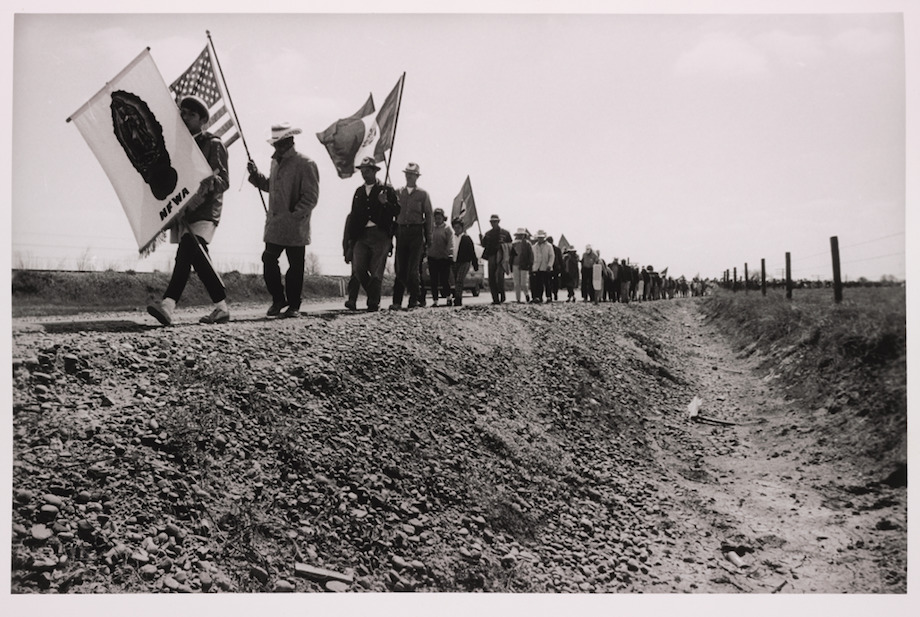
The ontology of the farmworker movement comes to life within the thorough documentary by Abel Sanchez and Andres Alegria, Song for Cesar. The film retraces in detail the life and legacy of the labour leader and civil rights activist Cesar Chavez.
The picture captures an epoch and all the main social actors that defined it, especially the musicians and artists who characterised the cultural revolution in these regards, such as Joan Baez, Maya Angelou, and Carlos Santana, amongst many others. Profound interviews and compelling footage intertwine the titular character’s existence — from childhood to his final days — with his movement, that had the pursuit of conquering equality and justice for America’s suffering farmworkers.

From a filmic perspective, Song for Cesar is structured as an actual hymn of the people. As the filmmakers clarify, it is composed by three parts: verse, chord, and bridge. The verse is epitomised by the chronicle of the excruciating social battles carried out by Cesar Chavez and the United Farm Workers; the chord is represented by the diverse mosaic of testimonies from the musicians, poets, playwrights, painters, and entertainers supporting the farmworkers’ plight; the bridge is ultimately embodied by the peaceful protests that wanted to subvert the status quo, through a nonviolent initiative to pursue a brotherhood and sisterhood of mankind.
In this manner the musical angle of the film allows a social cause to come alive through all its performers — whether they are in the forefront like Cesar Chavez or if they are supporters backing him up — to convey a cry in unison. All the labourers and people are united, fighting for their rights, just like a choir and orchestra project a unique harmonious sound. Thus, audiences can learn the truth with a cinematic-song, about a community wandering across the land and struggling to be free.

The 1960s and 1970s were effecting the music of their time, but on an equal scale the music was effecting the era. Troubadour songs become the chants for positive change, like Joan Baez’s Juan De La Cruz, or Las Adelitas, Los Chucos Suaves, and Brown Eyed Children of the Sun.
There were no child labour laws, and farmworkers were toiling away in inhuman conditions, with bent backs for ten hours each day. They were all seeking a place under the sun. Hence, Song for Cesar, delivers a very effective snapshot of the Chicano Movement, that developed in the United States and that involved millions of Mexican immigrants. They all shared the same ideals and determination to assert their identity as opposed to the Anglo-American one. The Chicano movement still survives today and does so by taking root, through memory, in the consciousness of those who actively took part in it.
The Latino community portrayed in the documentary is a portrait of the “Campesinos” who stoop up for themselves, thanks to a charismatic leader, such as Cesar Chavez, who nourished the power of persistence of his people, providing them with a sense of purpose. Abel Sanchez and Andres Alegria demonstrate praiseworthy commitment in gathering as much original material as possible and delivering it in an ambitious manner. However, despite the nobility of its motive, the experiment has a rather stodgy result. The objective of blending music, art and politics is commendable, but the method with which it has been carried out is befuddling. Nevertheless, what remains at the end of the film is a timely and contemporary reminder of art’s role in progressive change and what lies on the road ahead of us today. As Cesar Chavez once said: “Once social change begins, it is impossible to reverse it. A person who has learned to read cannot be made ignorant again. One cannot humiliate a person who feels proud. Peoples who are no longer afraid cannot be oppressed. We have seen the future and the future belongs to us.”
Final Grade: C+
Check out more of Chiara’s articles.
All images are Courtesy of Juno Films.

